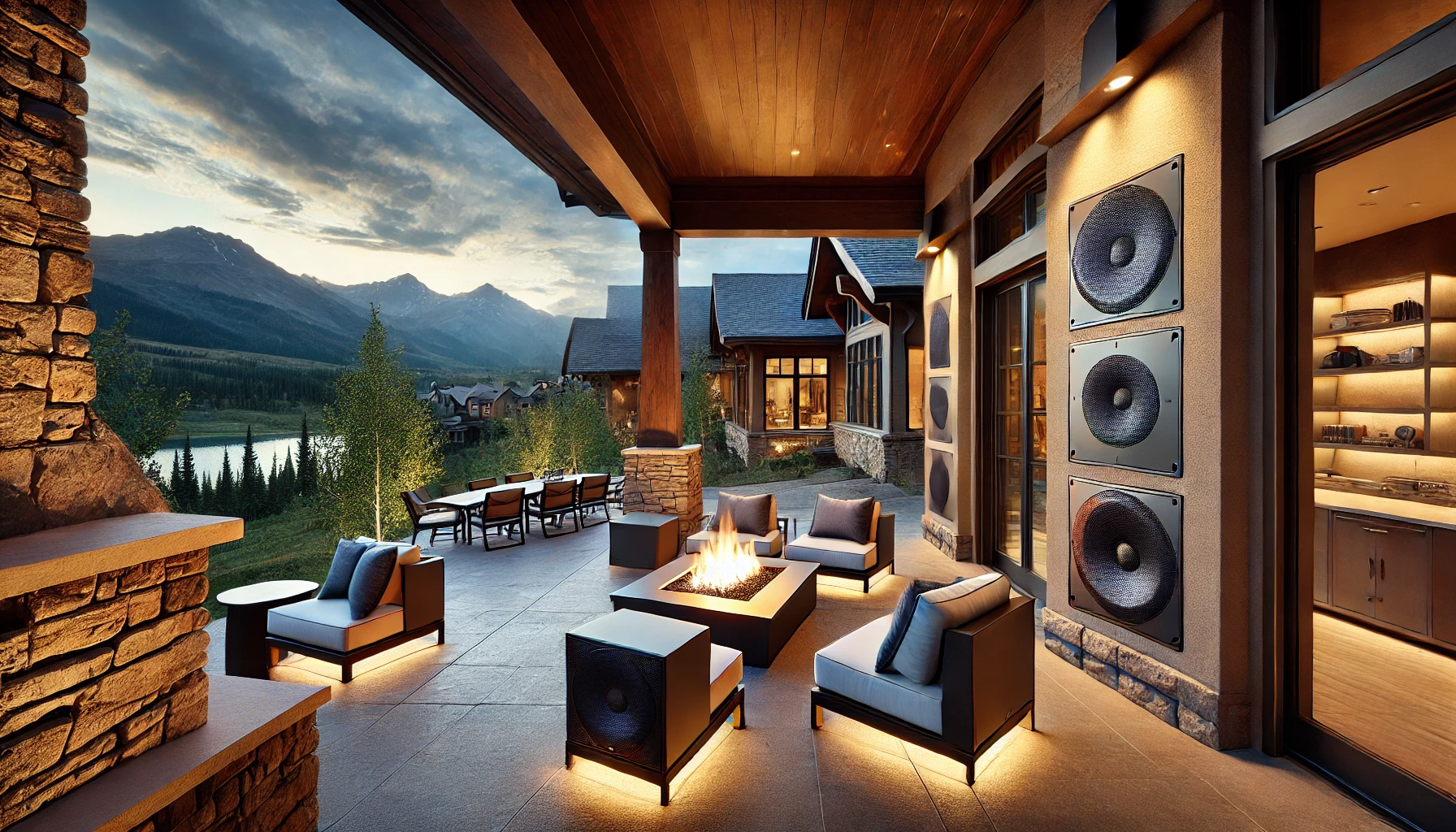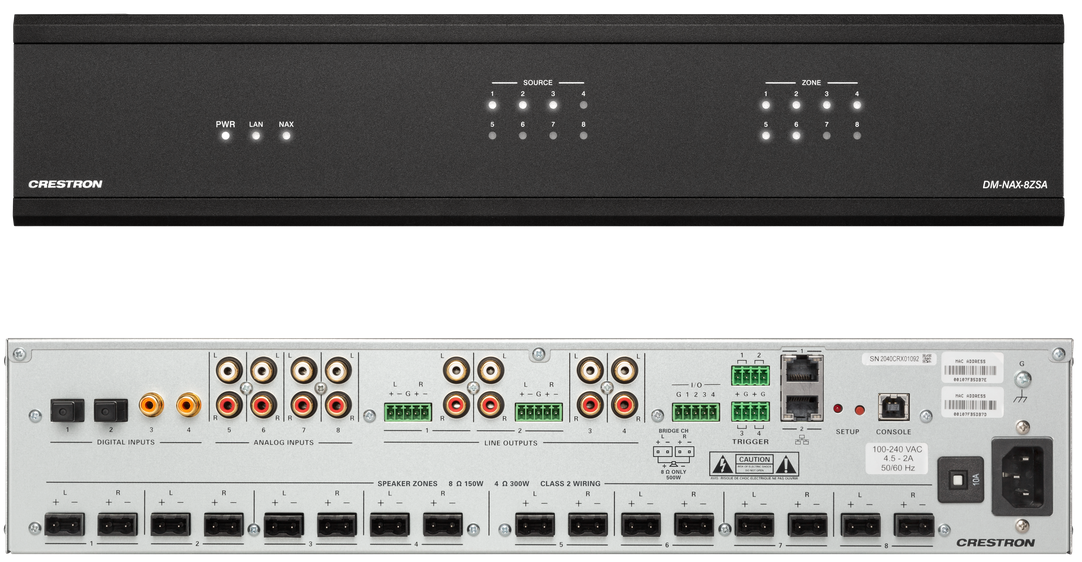The listening room is personal. Always has been.
In high-end homes throughout Colorado’s mountain country and metropolitan enclaves, music lovers have long reserved a space—sometimes an entire room, other times just a corner—for deeply intentional listening. But something has shifted in recent years. The listening room, once anchored in analog rituals and hi-fi gear proudly on display, is now being reimagined. Vinyl still spins, tubes still glow, but invisible speakers, hybrid control systems, and architecture-integrated acoustics have elevated both the aesthetic and sonic landscapes.
We’ve watched—and helped shape—this evolution firsthand. Today, we’re mapping out that transformation in the format audiophiles might appreciate most: a timeline.
The Golden Age of Hi-Fi (Pre-2000s)
The Setup: Turntables, tube amplifiers, teak speaker cabinets the size of twin beds. The goal was purity. Gear was proudly displayed and speaker cables were a point of pride, not something to conceal.
Colorado Perspective: In early log and timber-frame homes across the Rockies, the “listening room” was often a den or study adjacent to a large stone hearth. Heavy wood paneling gave certain structural resonance, but created acoustic challenges. Many of these homes were seasonal, so temperature fluctuations and low humidity elevated concerns about equipment longevity.
Audio Behavior Patterns: Audiophiles of this era leaned hard into stereo image placement, vinyl cataloging, and tweaking stylus tracking force. Lighting? Manual dimmer. Power conditioning? Maybe an isolation transformer, maybe not.
Takeaway for Today’s Designers and Builders: Although much of this era’s tech appears dated, its priorities—clarity, warmth, authenticity—still drive modern listening room design. We regularly work with clients who preserve their analog components but expect modern support infrastructure: conditioners, room correction, ergonomic furniture, and hidden cable management.
The Digital Convergence Begins (Early 2000s–2010)
The Setup: CDs and early music servers entered the room. Brands like McIntosh, NAD, and Marantz started integrating digital inputs. Multi-zone audio control arrived, sparking the first signs of “smart” listening.
Architectural Design Impact: Builders began framing dedicated media spaces during initial construction to support speaker wire pulls and equipment racks. Interior designers, not always thrilled about the visible gear, started experimenting with cabinetry to mask components.
An AV Trade Moment: A custom builder we frequently collaborate with in the foothills told us, “My clients still want to see the gear, but their partners usually want it to disappear.” That tension never really went away—it just got more sophisticated.
Colorado Challenges: Altitude began introducing complications for powered subwoofers and amplifiers. We started recommending higher-end ventilation systems or passive cooling strategies in rooms built above 8,000 feet.
Whole-Home Audio Expands, Compromises Emerge (2010–2016)
The Setup: This era gave rise to “distributed audio” everywhere, via platforms like Control4 and Sonos. Sounds came from in-walls and ceilings, but many rooms were acoustically neglected. Convenience was king. Fidelity slipped in the hierarchy.
How It Showed Up in Homes: The dedicated listening room shrank—recast as flex rooms, home offices, library lounges, or even part of a great room design. Builders were running speaker wire during rough-in, but often skipping acoustic treatment or isolating power sources.
Architect/Designer Insight: We often had quiet conversations with interior designers who considered hidden speakers a win, but hadn’t anticipated the acoustical tradeoffs of flat ceilings and glass-heavy walls in a modern mountain home.
Installer Perspective: We installed more in-ceiling stereo pairs in this period than any other. Blanketing homes with single-point stereo was the trend, but we regularly cautioned trade partners about room acoustics and the loss of audio focus. Still, convenience was winning.
Lesson Learned: As CE Pro reported in 2015, the race for “good enough” audio reached its tipping point when clients started asking why their $5M homes didn’t sound better. That’s when fidelity began its revival—this time with renewed design sensitivity.
The Audiophile Renaissance (2017–2020)
The Setup: Analog started making a comeback, this time surrounded by better control, elegant furniture, and acoustically intelligent design. Turntables, vacuum tubes, and streaming cohabited. DSPs and high-resolution platforms like Roon and TIDAL joined the stack.
Colorado Collaboration Scenario: Working with a young interior designer on a ski property project, we integrated a hidden James Loudspeaker system behind custom millwork. The homeowner, a vinyl lover, requested visible record storage but didn’t want to see a single cable.
Architectural decisions like ceiling height, wall material, and window layout had a direct impact on speaker placement and bass response. By coordinating early, we embedded adjustable acoustic panels behind the artwork. She kept her aesthetic; he got jaw-dropping sound.
Hidden, But Heard: Invisible speakers (literally behind plaster), flush-mounted amps with auto-calibrating EQ, and low-rise equipment consoles started showing up in our listening room specs. Focal and Wisdom Audio systems became go-to options. After installing dozens of these configurations, we developed standard tolerances for cable runs and airflow around powered gear in stone-heavy construction.
Today’s Immersive & Intelligent Room Experience (2021–Now)
The Setup: Voice-controlled, app-based precision. Listening rooms now respond to scenes: “Play vinyl,” “Jazz at sunset,” or “Studio mode.” Lighting, motorized shades, and HVAC respond in tandem. Acoustics are designed early, with STC ratings in mind for adjacent spaces. Streaming and analog finally make peace.
Trade Professionals’ Roles Have Evolved: Designers are choosing fabrics and wall finishes based on RSI values and absorption qualities. Builders framing media rooms are now getting specs from us that include AV rack cooling needs alongside lighting load calculations. Architects want precise speaker cutout locations early so millwork aligns perfectly.
Our Role at Xssentials: High-end audio is still high-touch. But now, we’re consulting earlier—at the drywall stage instead of retrofitting behind bookshelves. Trade partners loop us in during the reading of elevations, not during occupancy. And that collaboration is where the real upgrade happens.
Local Adaptations in Colorado Projects: Altitude continues to affect certain Class A amplifiers in high country homes, especially when paired with log construction or high solar gain. We often recommend floating audio racks with direct HVAC support in enclosed furniture. For semi-seasonal homes near ski destinations, we deploy remote access diagnostics to monitor performance even when the home is vacant. That’s critical when humidity control or system recalibration needs attention.
CTO Perspective from the Field: After field-installing over 50 units of a particular Wi-Fi streamer that failed under cold-start boot conditions at high elevation, we switched to another vendor’s platform built with alpine durability in mind. Trade partners appreciate when we vet equipment in our mountain test rack first.
What’s Next: Predicting Tomorrow’s Listening Experience
Hybrid Spatial Audio: We’re seeing early demand for Dolby Atmos Music integration in private listening rooms. Yes, music-only—not cinema—and it’s spatial. Think immersive concerts with real texture you can feel. As Systems Contractor News recently reported, immersive multichannel audio is gaining critical mass. We’ve started designing multi-use listening lounges that handle stereo and spatial seamlessly.
AI-Assisted Acoustics: Integrating machine learning tools that respond to changing interior design decisions is coming. We’re exploring software that dynamically re-tunes systems based on furniture rearrangements or seasonal changes in absorption (yes, even that new rug matters).
Invisible Everything—but with a Soul: The paradox of today’s listening rooms? Clients want the emotion of analog music in a room that looks like it was curated for Architectural Digest. And that’s possible—but it takes early alignment. Minimalism and performance are not mutually exclusive.
Key Guidelines We Offer Architects, Builders & Designers
Specify AV Needs Early: Don’t wait until trim-out to involve the integrator. Whether it’s chases for cabling or plans for bass traps hidden behind millwork, advanced planning keeps form and function in harmony.
Design for Versatility, Not Just Aesthetics: The “listening room” may also serve as a study or entertainment space. That hybrid nature affects speaker placement, control interfaces, and lighting design.
Support Heating & Cooling for Room Equipment: High-powered amplifiers and preamps need airflow—especially in Colorado’s high-altitude homes where winter heating can dry out gear and summer sunrooms can overheat poorly ventilated racks.
Remember That Sound Comes From Everywhere: Architectural details like soffits, cornices, stone columns, glass expanses and acoustic laminates can either complement or conflict with great sound. We help you solve for beauty and balance.
Final Thought: The Listening Room Isn’t Going Away
It’s just becoming smarter. And quieter. And more beautiful.
Whether the homeowner is spinning a Miles Davis record next to a walnut bookshelf in a Colorado high country lodge, or queuing up a studio-grade TIDAL session with a voice command in their Denver penthouse, one thing is universal: they want soul, simplicity, and performance.
And if you’re the trade partner helping bring that vision to life, we’re here as teammates who understand both the art and the acoustics.
Let’s design those spaces together, from the knob on the preamp to the fabric on the ceiling.



